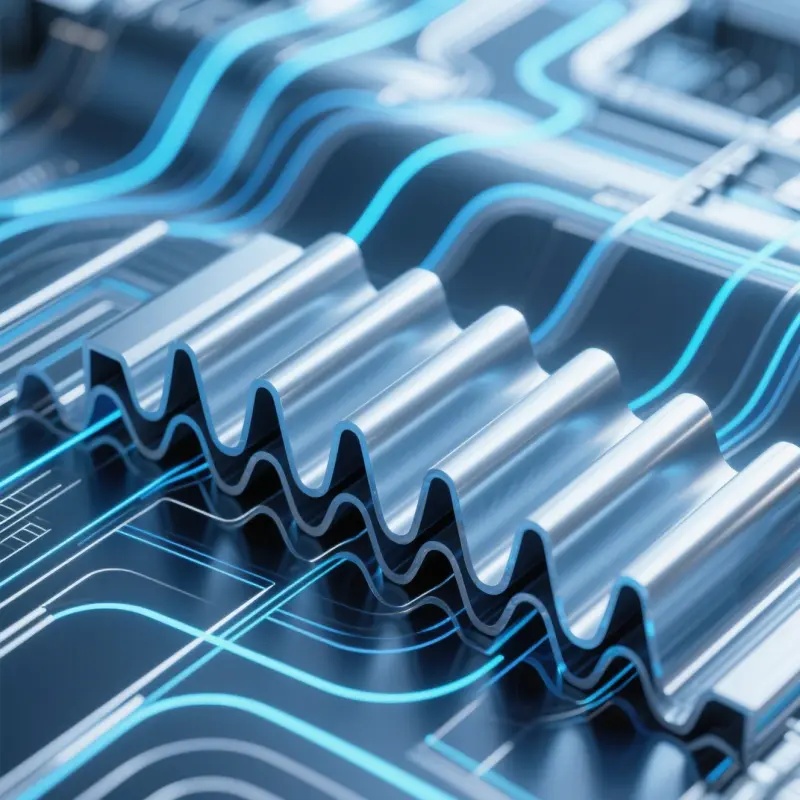
How to Weld Aluminum: A Pro Guide for 2025 Understanding How to Weld Aluminum Ever wondered why so many welders ask, “How hard is it to weld aluminum?” If you’ve tried to weld steel and then moved on to aluminum, you’ll notice the process feels entirely different—and not just because of the lighter weight. Aluminum’s unique properties bring some real challenges to the table, especially for those learning how to weld aluminum for the first time. Why Aluminum is Tricky to Weld Let’s break down what makes aluminum welding such a different experience compared to steel: High Thermal Conductivity: Aluminum pulls heat away from your weld much faster than steel. This means you need more heat to create a good weld, but too much can quickly cause burn-through. Low Melting Point: Pure aluminum melts at about 1,220°F (660°C)—almost half the temperature needed for steel. This makes it easy to accidentally melt through your workpiece if you’re not careful. Tough Oxide Layer: Aluminum forms a thin, invisible oxide coating almost instantly when exposed to air. The problem? This oxide melts at a whopping 3,700°F (2,000°C)—much higher than the metal underneath. If not removed, it acts like an insulator and can cause poor weld quality. Key Fact: “Aluminum’s oxide layer melts at nearly three times the temperature of the base metal, so special cleaning and welding techniques are essential for strong, clean welds.” On top of all this, aluminum is more prone to porosity and cracking if not handled properly. Hydrogen can dissolve in molten aluminum and get trapped during cooling, causing bubbles and weak spots in your weld. What This Guide Covers Sounds complex? Don’t worry. This guide is designed to help you master aluminum welding, step by step. Whether you’re a beginner or have some experience, you’ll learn: Why surface prep is the most important step in how to aluminum weld Which welding method—TIG or MIG—fits your project best How to set up your equipment for aluminum’s unique needs Proven techniques to achieve strong, shiny welds How to troubleshoot common problems and avoid costly mistakes By the end, you’ll have the confidence and know-how to tackle aluminum welding projects with professional results. Ready to get started? Let’s dive in. Step 1: Choosing Your Welding Method When you’re learning how to weld aluminum, one of the first big questions is: “Should I use TIG or MIG welding?” The answer isn’t always straightforward. Each method has strengths and trade-offs that can make or break your project—especially when you’re working with aluminum’s unique quirks. TIG Welding for Precision Imagine you’re building a custom bike frame or repairing a thin aluminum panel. You want the welds to be clean, strong, and almost invisible. That’s where TIG (Tungsten Inert Gas) welding shines. TIG gives you precise control over heat and filler material, allowing you to create neat, high-quality welds with minimal spatter. It’s especially popular for thin-gauge aluminum, intric...
Read More
Top Aluminum Boats for Sale in 2025: Buyer's Guide Finding the Best Aluminum Boats for Sale in 2025 Why Choose an Aluminum Boat? When you start searching for aluminum boats for sale, you’ll notice these versatile vessels dominate lakes, rivers, and even saltwater inlets. But what makes them such a popular choice? Imagine a boat that’s as easy to tow behind your vehicle as it is to launch solo at the ramp. Aluminum boats are prized for their lightweight construction, which means easier handling, better fuel efficiency, and less hassle when it comes to storage or transport. They’re also renowned for their toughness—able to shrug off bumps, scrapes, and shallow-water adventures that might sideline heavier fiberglass models. Durability: Aluminum boats can take a beating and keep going, making them ideal for anglers, hunters, and families alike. Lightweight: Easier to trailer, launch, and retrieve—even for solo boaters or those with smaller vehicles. Versatility: From small aluminum boats for sale perfect for quiet creeks to larger rigs designed for open water, there’s a model for every adventure. Low Maintenance: Aluminum naturally resists corrosion and requires less upkeep than other materials, saving time and money over the years. Whether you’re considering a brand-new model or exploring used aluminum boats for sale, these benefits make aluminum a smart investment for both novices and seasoned boaters. Setting the Standard for 2025 The market for aluminum boats continues to evolve, with 2025 models offering more choices than ever—from rugged fishing boats to family-friendly cruisers. But here’s the key: not all aluminum boats are created equal. The real value of any aluminum boat for sale lies in the quality of its core material and construction. Superior marine-grade alloys, expertly welded seams, and thoughtful design all contribute to a boat’s performance, lifespan, and safety on the water. “Choosing the right aluminum boat isn’t just about price or features—it’s about investing in a vessel that will deliver years of reliable, low-maintenance fun. Take your time, compare options, and focus on quality first for true long-term satisfaction.” In this guide, we’ll break down what to look for, compare top models, and help you find the best aluminum boat for your money in 2025—so you can spend more time enjoying the water and less time worrying about your investment. How We Evaluated the Top Aluminum Boats Our Evaluation Criteria When you’re browsing aluminum boat hulls for sale or eyeing the latest pre cut aluminum boat kits for sale, it’s easy to get swept up by flashy features or price tags. But what really matters when choosing the best aluminum fishing boat for sale in 2025? To help you make a confident decision, we’ve developed a clear set of criteria rooted in what experienced boaters and industry experts value most. Hull Construction & Material Grade: Is the boat built with marine-grade aluminum? Are welds or rivets expertly finished? Thic...
Read More
Aluminum Angle Sizes & Alloys: A Complete 2025 Guide What Is Aluminum Angle and Why Use It? When you step into a construction site, peek inside a piece of machinery, or even browse a home improvement aisle, you’ll notice a simple L-shaped metal profile showing up everywhere. That’s the aluminum angle—a workhorse of modern engineering and design. But what exactly is it, and why has it become so indispensable? The Versatility of L-Shaped Profiles Aluminum angle, sometimes called angle aluminum or aluminum angle metal, is an extruded profile shaped into a precise 90-degree "L." Each leg of the angle can be equal or unequal in length, allowing for a broad range of structural and decorative uses. Imagine framing a window, reinforcing a shelf, or building lightweight supports: these are just a few scenarios where aluminum angles shine. Their geometry provides excellent rigidity and support, making them a go-to component in both industrial and DIY projects. Equal leg angles: Both sides are the same length—ideal for balanced support. Unequal leg angles: One leg is longer, offering flexibility for custom reinforcement. Whether used as a structural brace, a trim edge, or a framework, these profiles adapt to countless needs. Why Aluminum is a Premier Material Choice So, what makes aluminum the preferred material for these angles? The answer lies in its unique combination of benefits: Lightweight: Aluminum weighs about one-third as much as steel, making handling and installation much easier—especially for projects where weight matters, like transportation or aerospace. Strength: Despite its low weight, aluminum angles offer an impressive strength-to-weight ratio, providing reliable support without excess bulk. Corrosion Resistance: Aluminum naturally forms a protective oxide layer when exposed to air. This makes it highly resistant to rust and ideal for outdoor, marine, and humid environments. Workability: Easy to cut, weld, and shape, aluminum angles can be fabricated to meet custom requirements for any project. These properties make aluminum angles not only durable and long-lasting, but also cost-effective and environmentally friendly, as aluminum is highly recyclable. In this guide, you’ll discover everything you need to know about aluminum angles: how to read their sizes and specs, how to choose the right alloy, their most common applications, and practical tips for fabrication and finishing. Whether you’re a builder, designer, or curious DIYer, this comprehensive resource will help you make informed choices for your next project. Decoding Aluminum Angle Sizes and Specs Ever stared at a list of aluminum angle sizes and wondered, “What do all those numbers mean?” If you’ve found yourself confused by terms like leg length, thickness, or radius, you’re not alone. Understanding these specifications is the first step to choosing the perfect angle for your project—whether you’re building a heavy-duty frame or adding a subtle trim detail. How to Read Alumin...
Read More
Aluminum Acetate: Uses, Formula & Guide for 2025 What Is Aluminum Acetate? Ever wondered what’s inside those soothing skin solutions or powders you reach for after a rash or bug bite? That key ingredient is often aluminum acetate—but what is aluminum acetate, really, and why is it so widely used? What Exactly Is Aluminum Acetate? Aluminum acetate is a salt-based topical astringent that helps relieve minor skin irritations by tightening and drying the skin’s surface. In simple terms, aluminum acetate is a compound that contains aluminum, combined with acetate (a form of acetic acid). Its most important job is acting as an astringent—a substance that makes body tissues contract. Imagine how a sponge shrinks as it dries: that’s similar to how an astringent works on your skin, helping reduce swelling, oozing, and irritation. When you apply an aluminum acetate solution or powder to your skin, you’ll notice a gentle tightening and drying effect. This can be especially helpful for calming itchy or inflamed skin caused by things like poison ivy, insect bites, or minor rashes. Common Forms and Preparations Aluminum acetate comes in several easy-to-use forms, each designed for specific situations: Solution: Pre-mixed liquid, often called Burow’s solution, ready for direct application or soaking. Powder: Convenient packets (like Domeboro) to mix with water and create a fresh solution at home. Cream or Gel: Less common, but available for targeted relief on small areas. Each form is made for external use only, and you don’t need a prescription to purchase most of them. The versatility of aluminum acetate means it’s not just a medicine-cabinet staple. It’s also used in certain industrial and textile processes, making it valuable both in healthcare and manufacturing settings (Healthline). In summary, whether you’re looking for fast relief from a skin flare-up or curious about its broader uses, aluminum acetate is a well-established, multi-functional compound that’s easy to find and simple to use. The Chemical Formula and Properties of Aluminum Acetate Sounds complex? Let’s break down the aluminum acetate formula so it’s easy to understand, whether you’re a science enthusiast or just curious about what’s in your medicine cabinet. Decoding the Aluminum Acetate Formula The aluminum acetate chemical formula is written as Al(C2H3O2)3 or sometimes as Al(CH3COO)3. This means the molecule contains: One aluminum atom (Al) Three acetate groups (each made of carbon, hydrogen, and oxygen) Imagine the aluminum atom as the central hub, with three acetate ions branching out from it—like a small tree with three limbs. Each acetate group attaches to the aluminum through oxygen atoms, creating a stable, well-bonded structure. Element Symbol Number of Atoms Aluminum Al 1 Carbon C 6 Hydrogen H 9 Oxygen O 6 So, what is the formula for aluminum acetate? It’s Al(C2H3O2)3, which can also be expressed as C6H9AlO6—both forms are accepted in scientific literature (Extramarks). Key Ch...
Read More
8020 Aluminum: The Ultimate Guide for 2025 What Is 8020 Aluminum and Why Is It So Popular? Ever wondered how engineers build custom workstations, machine guards, or even DIY projects without welding or heavy machinery? The answer often lies in a clever system called 8020 aluminum. But what is 8020 aluminum, really? Despite its technical-sounding name, it’s not a specific metal or alloy—instead, it’s a versatile modular T-slot framing system that’s transforming the way people design and build custom structures. What Exactly is 8020 Aluminum? When you first hear the term “8020 aluminum,” you might assume it refers to an alloy or a particular metal blend. In reality, it’s the name of a system invented and patented by the 80/20 company in 1979. The system uses T-slot aluminum extrusions: long, lightweight bars with T-shaped channels running their length. These channels allow you to quickly connect pieces together using specialized brackets and fasteners—no welding, drilling, or heavy tools required. Imagine building with adult-sized, industrial-strength LEGO blocks, but made from high-grade aluminum. The name “80/20” itself comes from the company’s claim: you can build structures that are 80% complete in just 20% of the time compared to traditional methods. This idea is inspired by the 80/20 principle (also known as the Pareto Principle), which suggests that a small portion of effort often delivers the majority of results. Here, the system enables rapid assembly and flexibility, letting you focus on what matters most in your project. The Core Concept: A Building System, Not Just a Metal It’s important to note that 8020 aluminum isn’t defined by its chemical makeup, but by its function as a modular building system. However, the 8020 aluminum material used in these extrusions is typically 6105-T5 aluminum alloy. This alloy belongs to the 6000 series—known for its excellent strength, corrosion resistance, and machinability. The composition generally includes: Aluminum: 97.2% to 99.0% Magnesium: 0.45% to 0.8% Silicon: 0.6% to 1.0% Other trace elements for added performance The manufacturing process involves extrusion: aluminum billets are heated and forced through a die to form the distinctive T-slot profile. After extrusion, the material is heat-treated (often to the T5 temper) to maximize its mechanical properties, resulting in profiles that are both strong and lightweight. The core value of 8020 aluminum is simple: it empowers you to create custom structures with minimal tools, no welding, and endless flexibility. Thanks to this unique combination of modularity and material strength, 8020 aluminum has become a go-to solution for engineers, manufacturers, and makers alike. Whether you’re building a machine frame, a display stand, or a home workshop upgrade, this system offers a level of adaptability and ease that traditional materials simply can’t match. Understanding the T-Slot Framing System When you first encounter 8020 t slot aluminum, it may look ...
Read More online service
online service 0086 136 3563 2360
0086 136 3563 2360 sales@sxalu.com
sales@sxalu.com +86 136 3563 2360
+86 136 3563 2360